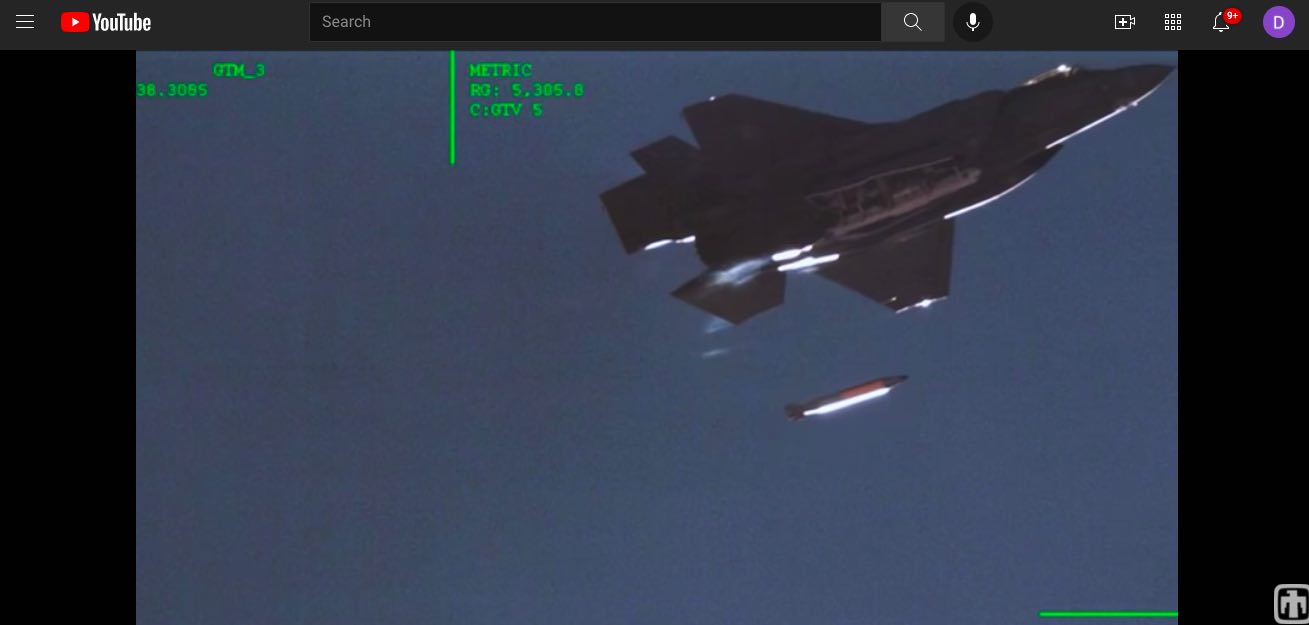
The US is about to move towards a far more likely first use of nuclear weapons, with word that the Air Force has “completed flight testing” of the cost-and-performance-plagued F35A Lightning fighter, all units of which are being “upgraded” to carry thermonuclear weapons.
What this means, as explained in a new article in Popular Mechanics, is that the world’s most costly weapons program (at $1.7 trillion), a fifth-generation fighter, supposedly “invisible” to radar (that actually cannot fight and is not invisible to advanced radars), now has a new mission to justify its existence and continued production: dropping dial-able “tactical” nuclear weapons that can be as small as 0.3 kilotons or up to 50 kilotons in explosive power.
Now 0.3 kilotons is” just” the equivalent of 300 tons of dynamite, which supposedly makes them “useable,” meaning not holocaust-causing (that is assuming that some country backing the targeted country doesn’t decide to respond in kind and we are soon on the escalation ladder moving quickly up to ever bigger bombs). Meanwhile, dialed up to its maximum 50-kiloton power each F35A bomb would be almost three times as powerful as the nuclear bombs that leveled Hiroshima and Nagasaki.
The Popular Mechanics article, also published in Yahoo News, quotes Pentagon sources as saying the new F35A capability gives the US flexibility to deliver nukes to targets in a country threatening the US, and also to recall them up to the last second before dropping the weapon since the plane would be piloted. But this supposed advantage of a manned delivery system being recallable is a fantasy.
As Daniel Ellsberg has exposed in detail in his 2017 book The Doomsday Machine, written based on his decades of work with a top security clearance on behalf of the Secretary of Defense office investigating command-and-control procedures and practices of the nation’s nuclear forces, there is no way to guarantee that a pilot ordered on a nuclear strike mission will receive — or believe — any message or signal ordering a cancellation of the attack order.
As Ellsberg explains, communication systems routinely break down on an almost daily basis at one of the US military’s hundreds of global bases and aircraft carrier battle groups, cutting of the link between Washington and its bases far-flung military bases, because of equipment malfunctions, storms, solar flares, etc.. Furthermore, in a period of international crisis, a pilot may distrust even an order to call off an attack which, after all, won’t be a phone call from the president, a Pentagon general, or even a known base commander, but rather a short coded signal. As Ellsberg notes in his terrifying book, the other flaw is that a pilot, once ordered on such a mission, could decide in the heat of the moment, to just carry on with orders and drop his weapon regardless of receiving a cancellation order. Remember, in times of crisis, countries may be employing jamming systems to knock out enemy military communications, or could even be blinding communication satellites. So in the end, the with a fleet of nuclear bomb-carrying F-35As in the air, it will be 1000 individual pilots possibly flying out of communication with their commanding officers, deciding whether to start World War III, only one of whom has to decide to push the drop button.
And remember, the F-35 is a uniquely complex and demonstrably unreliable piece of flying software. It’s almost a certainty that any order to call off an already launched surprise attack would fail to reach some of the hundreds of pilots racing to deliver their two deadly nukes to targets, and that some would continue carrying out their initial attack orders.
Meanwhile the scenario presented in the article — a lone pilot being dispatched to deliver one or two dial-able B61-12 thermonuclear weapons onto some command-and-control center or missile launching site, perhaps — is not really what the Pentagon strategists have in mind for its F-35A planes…
For the rest of this article, please go to the investigative news site Tarbell.org.
